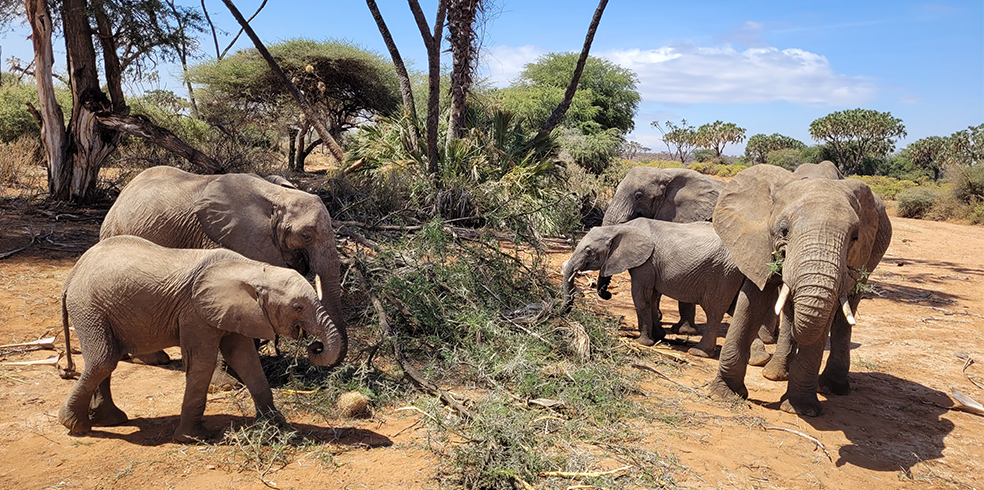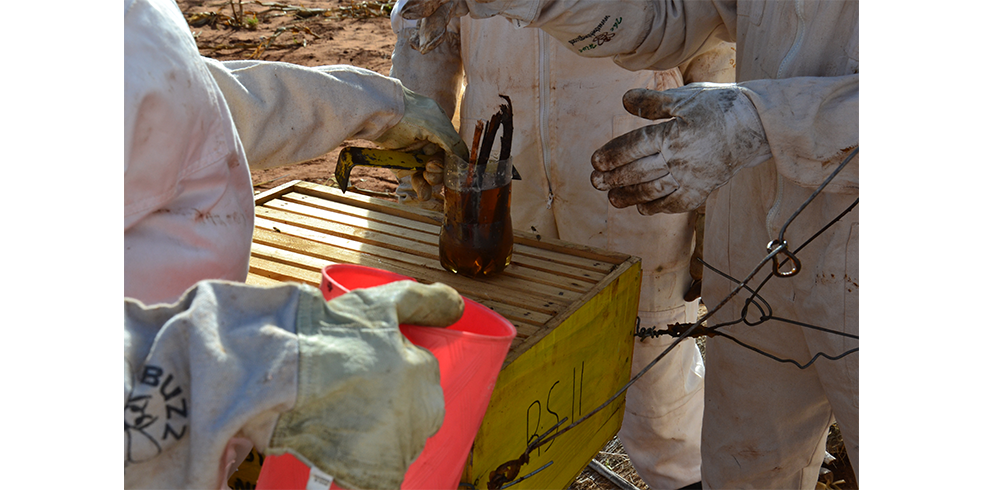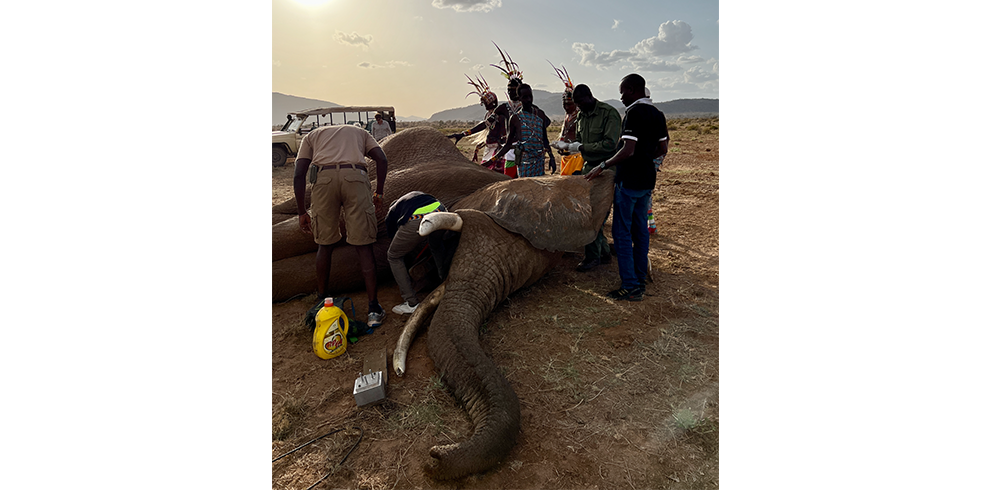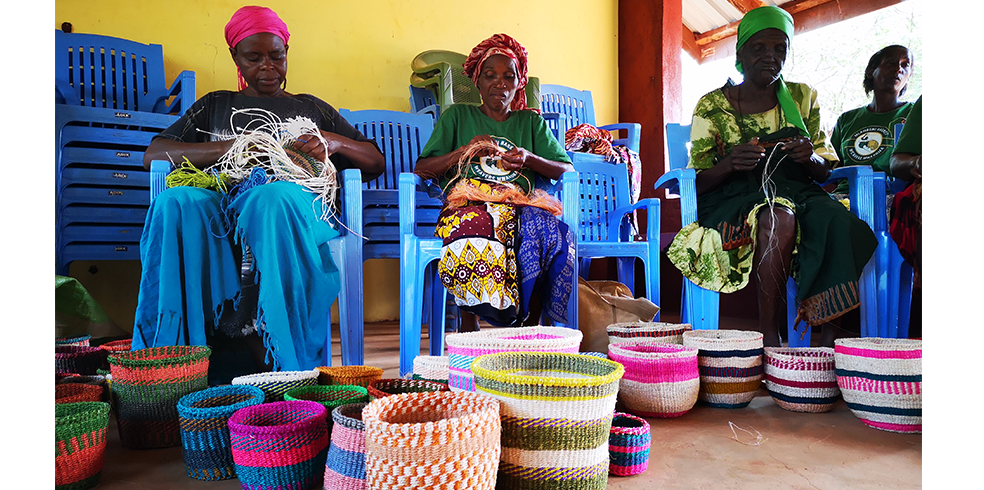These past few months have been tough for people and wildlife alike as Kenya continues to grapple with the effects of yet another prolonged drought that has ravaged parts of the country.
In northern Kenya, where our research camp is based, the wild animals are scrambling for food in a landscape that resembles a desert wasteland. Most of the grass has been eaten by hungry livestock that have invaded protected areas like Samburu National Reserve. Elephants are tearing down acacia trees to eat the thorny branches or walking brazenly into tourist camps in search of sustenance..

The Artists feeding on fallen acacia trees in Samburu National Reserve. Photo: Salome Gitau / Save the Elephants
The biggest threat to elephants during the drought is not necessarily a lack of water, but access to food. Because of overgrazing by livestock, there is little left for the elephants to eat. If the rains don’t come soon, many elephant calves and older females could die of starvation.
Already desperately hungry bull elephants are putting themselves in harm’s way and causing headaches for the residents of Archer’s Post in Samburu County, northern Kenya. The bulls have been roaming the streets at night, smashing fences and breaking into people’s compounds in search of food and water, leaving damaged property and human casualties in their wake. One elephant bull, named Para, was tragically shot dead after he and other elephants destroyed water points in a nearby village.
To counter further attacks and to protect both elephants and community members, Save the Elephants worked with the Kenya Wildlife Service (KWS) to collar one of the rogue bulls, an elephant named Kiir, and is tracking his movements to try and prevent the group from entering Archer’s Post. Alongside the Kenya Wildlife Service and Kalama community rangers, we are using vehicles to try and keep the enormous animals out of the town, but it’s a tough job. We are also working with some of the affected communities to train them how to put in place defenses and prevent problems in future. Where people have been injured in encounters with elephants, STE has covered hospital bills.
In the centre of Kenya is Tsavo – home of our elephants and bees project, and a region that is also gripped by drought. The last 3 failed rainy seasons have adversely affected local communities. While there is little crop raiding activity, owing to the fact that there are no crops, farmers’ livelihoods are still being impacted and as a result, they are struggling to feed their families. To maintain the 50+ beehive fence farms installed along the front lines of high human-elephant conflict farms in Sagalla, next to Tsavo East National Park, our team has resorted to feeding the honeybees with water and syrup just to keep them alive. However many of the bees have now sadly left the hives and farmers are missing out on the small income they normally receive this time of year from sales of honey.

Feeding bees with sugar and water syrup in Tsavo at the peak of the drought. Photo: Camille Depre/Save the Elephants
Part of our work in Tsavo involves equipping the community with the knowledge and skills on diversifying their livelihood alternatives, through activities like basket weaving, sewing & tailoring and catering services, which allows them to be more self reliant in all weather seasons.
Meanwhile, the outlook for rain later this year is grim and there are fears the drought may stretch well into 2023 which is a major worry. We are actively working with our partners, local communities and government in Samburu and Tsavo to address the long-term problems the drought will bring to wildlife and communities alike. School feeding programmes are among the highest priority activities to get right. We’ll be sure to keep you updated on our progress as the situation develops.
You can help support our work by donating here
Top image: Increasing livestock numbers within elephant landscapes is a major cause of conflict. Photo: David Letitiya/Save the Elephants



